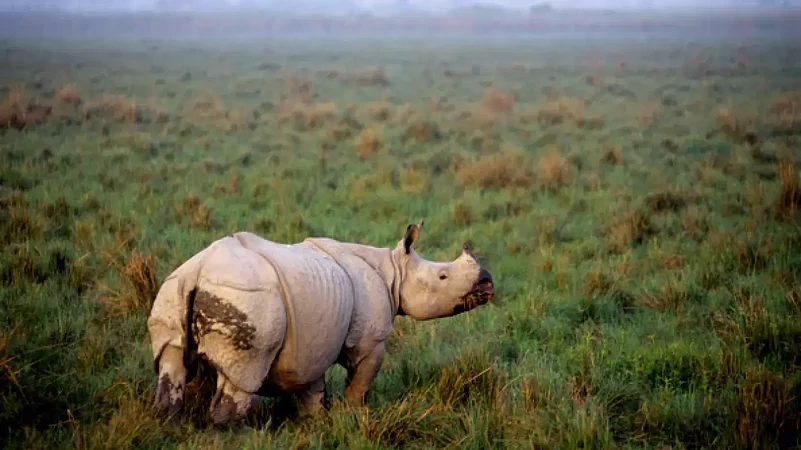Pugmarks and Carbon Footprints: A Collection of Green Humour Cartoons
Rohan Chakravarty
Penguin India
Rs 499
Rohan Chakravarty’s Green Humour series of cartoons has been lighting up the lives of nature lovers and cartoon fans for a long time with their illuminating blend of facts and humour. His cartoons have always focused on environmental issues with regard to animals and birds. Based in Nagpur, the city of tigers, this cartoonist and illustrator has great insight into what the wild world is going through which is why his blend of quirky work with satire and scientific information has always found fans.
There is very little jargon in Chakravarty’s work — he explains scientific terms clearly and simply. For example, in the case of the melanism of the tigers at Simlipal, he flags the gene Taqpep in a way which makes it obvious that even the tiger does not get it. Preachy he is not —his messages come across through light hearted banter. The trending and troubling issue of feral dogs, for example, he leaves to the local leopards that love dogs and are happy to deal with the problem for the Kerala Municipal Corporation.
Chakravarty prods a finger at the government which he comes up with theories of highways and byways and even golf courses in Manipur as well as at international governments and Brexit.
Pugmarks and Carbon Footprints, as the title suggests, concentrates on the issues of climate change — temperatures in the Arctic region going up and disrupting a shrew’s hibernation for example. Climate change has gone beyond human control and steps need to be taken to sort out carbon emissions and reduce the carbon footprint. We are all responsible and every drop counts in the ocean of change. Books like these are needed to set us on the right course in an enjoyable manner. It is not just applicable to grownups. Children will lap it up for its nuggets of knowledge delivered in an entertaining fashion. This is the kind of book that should feature in school environmental studies (EVS) courses. It does a great deal to highlight the strained relationship that we share with nature and subtly suggest ways and means of dealing with it.
Yes, there are glitches that one can think of. For example, when Chakravarty has his creatures review environmentally relevant books because one can think of a host of titles that could be included in which case it needs to be a series of reviews, or when the tiger cartoons have a focus on bloodstains and prey kills, a subject that was done more humorously when he showed a tiger visiting a South Indian restaurant in search of sambar! There is of course the fact that tourists like to see pretty things and a tiger in hunt mode may be magnificent but far from pretty!
It would help if the topics in the book were organised into sections, the way it was done in Green Humour for a Greying Planet because those who want to look for a specific series of cartoons would have to riffle through the book. When it comes to subjects that span the realms of human-animal conflict, ecological balance, wildlife science, and conservation as well, to name a few, that becomes a trifle difficult.


























